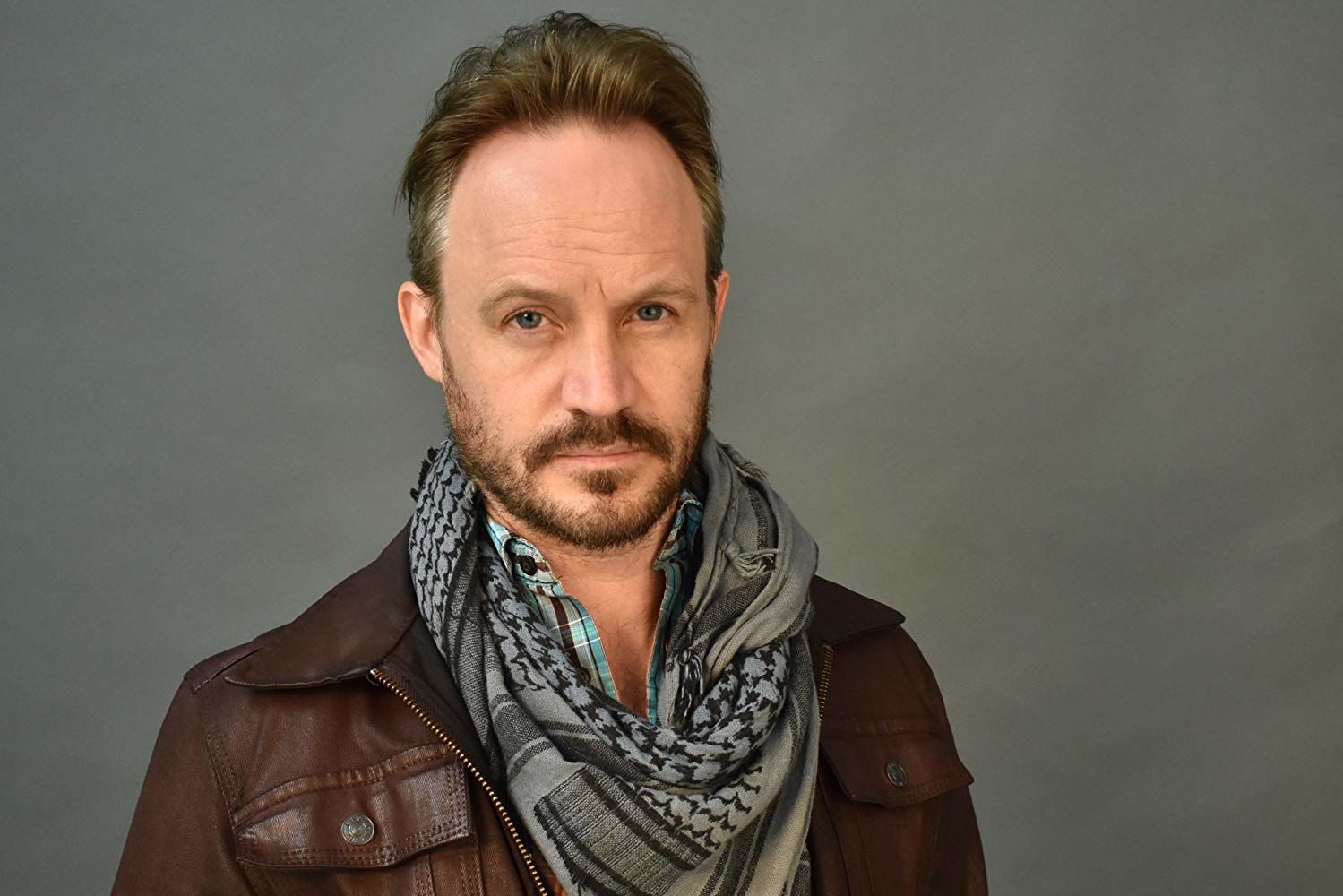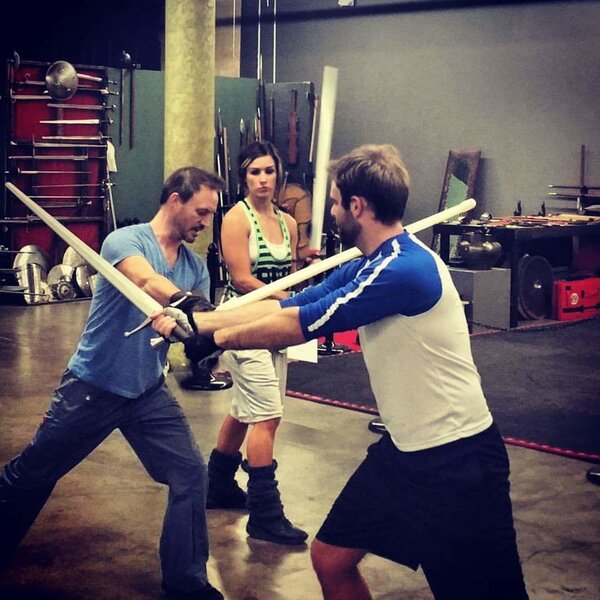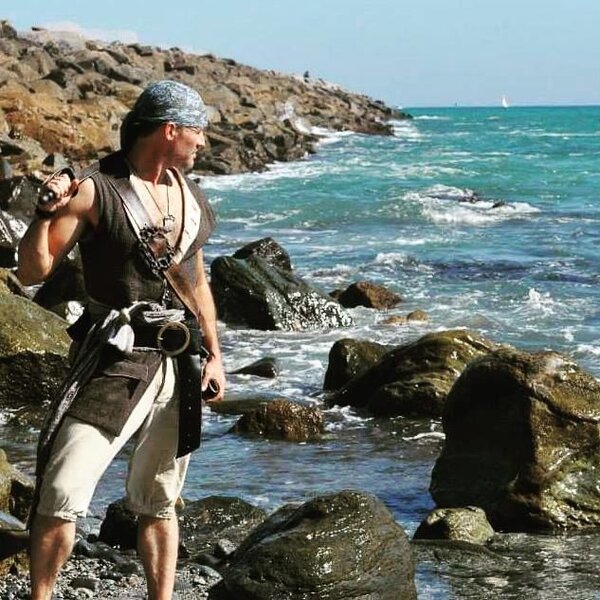Create a free profile to get unlimited access to exclusive videos, sweepstakes, and more!
Nerdy Jobs: Why choreographing fights is so different from martial arts

In Hollywood, a fight scene is way more than just two people charging at one another and coming to blows. There's a lot that goes into each punch, sword swing, and gnarly hit, as Steven Huff surely knows. Huff, a Los Angeles-based fight choreographer, action performer, and weapons instructor, makes a career choreographing fights for TV, film, and motion-capture, working on things like Fangasm, David and Goliath, and The League of S.T.E.A.M. He’s regularly called upon as a weapons expert on panels at conventions like San Diego Comic-Con, and he formed Creative Combat as a training center for martial arts and fight performance.
SYFY WIRE spoke to Huff about how geekdom led him into this career, the difference between training people for TV and film fight scenes and motion capture, and his favorite geeky panel question.
How did you get into weaponry, and how did you translate that into a career?
Steven Huff: I got an interest in martial arts and weaponry as a kid, you know, with some of the sci-fi and fantasy things at that time. Growing up in the '70s as a Star Wars kid, of course, I wanted to know how to use a lightsaber like everybody else. And so that was just us jumping around, and we'd cut down broomsticks in the backyard, painting them up. Then I remember when they did the TV movie of Shogun with Richard Chamberlain, and I was just fascinated by the ninja and the samurai. So then we were doing the same thing, just running around dressed up as ninja and samurai.
I had started martial arts early and it was really mainly Star Wars and things of that nature. And then, like a lot of the old fantasy movies, because that was right around the time you're getting into the early '80s, that's when I discovered Dungeons & Dragons, and that was it. From there it was all weapons all the time. That's all I wanted to know about.
That also fueled an interest in history, because I wanted to read up on knights and all of that. And the two actually just kind of went side by side. I started getting a lot of different weapons, starting with Eastern weapons, though a couple of different styles will come through, and then Kenjutsu, which is Japanese swordsmanship. And then I always had an interest in what were the Western fighting arts. I also loved Errol Flynn movies and Tyrone Power movies. That whole swashbuckling genre always interested me.
Is there a typical day on set? How would you describe your career to someone?
It's really tricky because for most people fights and things like that in the film industry are just under stunts. Like people automatically think, "Oh it's just stunt people," and all of that. While that's true for the most part, fight choreography is actually a very specialized art in and of itself. It's like dance — it's not about just teaching a set of moves, because anybody can learn a set of moves. It's making somebody take those sets of moves, and through body movement, posturing, telling the story, helping to make it more than just a bunch of moves being thrown.
Sometimes I'll show up and I'll have people that have some experience and are able to move, and then sometimes that's not the case. It gets a little tricky when you have somebody that's really never done anything even remotely close to wielding a weapon. And they have, if I'm lucky, a couple of weeks to now look like a swordmaster.
So that can be tricky, but even simpler things can be complicated. I was on set just for a kid that's getting bullied, and they were playing high schoolers and the kids walking to his desk, and another student trips him. And we had to go through and make sure everything was safe and that nobody actually got a tweaked ankle, and that when the kid kicks out his leg, he's not actually doing it with any force and showing the other kid how to fall onto the pad safely. It's something like that that people wouldn't even think about. And, technically because it was a kick that knocks a kid down, it counts as a fight, so I was brought in on that one.
Do you have favorite weapons to use or favorite styles of fighting?
It's really hard for me to pick one. And that's a question I get asked all the time. So you think I would have a go-to answer, but it actually, it's constantly kind of changing for me. Swords have always been my main fascination, but what particular swords style, it kind of shifts. For several years I was just really focused on Western swordsmanship like German and Italian, medieval long sword, Renaissance style, sword and dagger work, but for a while, it was like all my focus was on Japanese swords for a few years, and it kind of goes in cycles. And then axes and knives, I've always had a fascination with axes and knives, so those would probably be the main ones. But I just... I love all sorts of weapons. I've handled and worked with things that people don't even know exist.
Is there a difference between working for film and TV, and for motion capture for something like video games?
Yes, a huge difference actually. And that's a new field for me. So, it's like a whole new journey. One of the things that I've found is that the actor you're working with, he or she may be portraying a much larger creature. I was working with two actors, one was shorter and very agile and she was playing an elf. Then the other was going to be playing a human barbarian warrior, but grotesquely large like the Hulk. But that actor was not much bigger than I am. In the fight choreo, I had him come down with this overhead swing, but then when we moved the actors in the frame into the models, the barbarian was so wide that it looked like his arms suddenly popped up directly at the top of his shoulders, and would have crushed his head. So we had to tweak the choreo and change it to match the movements of that very large creature.
That's one of the main differences is you may be playing something that's not human. Most likely you'll be playing something that's not human or needs to move like a superhero or some other creature that either once was human or is humanoid, but still whatever its mutations or powers it has allow it to bend the rules of reality and move in a different way. So you have to keep that in mind as you're doing something. That's really tricky.
How many weapons do you have in your home?
In the house? Not that many. I've got about 10 to 12 swords that I keep here that are more valuable and have a lot more sentimental value, but then the rest I keep at my studio. There I’ve got, I'd say a couple hundred weapons. We're ready for the apocalypse, the zombie apocalypse. That’s where everybody’s going to go to. That’s the plan.
What’s the best part of your job, and what’s the biggest challenge?
The best part is I never really know what the next thing is going to be. You know, it's like being a kid again, it really is. I've been a pirate, a swashbuckler, a ninja, an action hero, you know, whatever you can think of over the past few years. And it's like constantly getting to play make-believe and getting paid for it. How does that get better? But then the challenge is, you know, like anybody in this industry, it's a constant fight, it's a constant hustle. Sometimes the work just isn't there and you have to figure out survival in those times. And that's why I teach the classes in addition to doing the film work and all of that. But you know, that is probably the biggest challenge.
You’re a weapons expert on a lot of panels at conventions. What is your favorite geek question about weapons?
I loved all of the controversy about the Kylo Ren cross-hilted lightsaber and how, you know, it was like people were fired up online, and it was amazing to me that so many people had such strong opinions about it. And then there were a lot of really good points. I ended up talking about it with a group of people, and then, you know, I've done a couple of panels on it and just showed how it's all about the grip and you can actually change things. But then it's like that leads right into the different fighting styles.
Those are the types of questions that I really enjoy because it lets you go beyond just a good so-and-so beat up so-and-so. And it's like, well let's look at the actual physical mechanics of these different fighting styles and all of that. You know, for me that lets me just look at it through more of a creative lens. And it's like, "Well how would I do that?" Those are probably some of my favorite. The, "What do you think of this type of fighting style or this type of weapon?"
What advice do you have for people who might want to get into this career?
Especially if you're already a martial artist and you've got a good experience with weapons — and then you want to jump into doing fight choreography — realize you're going to start all over again, all over at the bottom. I got into it late, in my 40s, and I'd already spent my life training and then had to learn a whole new set of skills. Mainly because of understanding the safety factors, but also now you're not creating a fight for people standing there, now you're having to do it through the eyes of the lens, so you really have to learn to understand camera angles.
One of the main things that I would recommend is to take the time to really study filmmaking so you can get a different idea of what the different shots mean. Get an idea of the different angles and then when you start building fights, take the time to look at it, have somebody shoot it and adjust the angles as you need. That can save a lot of time on set. If you can come together with a good pre-vis, a pre visual of the fight, that can save tons of time. So don't just focus on the fights, realize that the fights are just part of what your job entails.




























